Can the company that invented Aspirin reinvent itself? … How Bayer, 160 years old with 100,000 people, is creating a new operating model for future business called “Dynamic Shared Ownership”
October 20, 2024

As the world changes, organisations need to change too.
But in a world of relentless, revolutionary reinvention, it is not easy for organisations to keep pace. They need something more radical, more continuous, and more inspiring, if they are to thrive in today’s dynamic markets.
“Living companies” are what I call this new breed of enterprise.
They are inspired by a higher purpose than financial returns, they work like vibrant communities, they recognise people and ideas as their key assets, they act like entrepreneurial start-ups but also with the benefits of scale, to deliver further and faster, with more impact.
Haier‘s “rendanheyi” model has become a great example. Meeting with founder Zhang Ruimin a few years ago, he talked with passion about building high-energy, quantum-like, organisations. Look elsewhere, and Ben and Jerry’s and Patagonia are great examples of organisations inspired by more purpose. And there’s Handelsbanken from Sweden, Handu in China, and Haufe in Germany’s Black Forest.
Gary Hamel has been an evangelical voice for “Humanocracy” which he describes as “creating organisations as amazing as the people inside them” in his book with Michele Zamini. “Humans are adaptable, but organisations are (mostly) not. Humans are creative, but organisations are (mostly) not. Humans are passionate, but organisations are (mostly) not”, he says.
And now Bayer, the old German drug giant, is trying to do the same.
In January 2024, the 160 year old, 100,000 person company launched a new operating model called “Dynamic Shared Ownership” (DSO) worldwide, which will reduce hierarchies, eliminate bureaucracy, streamline structures and accelerate decision-making processes. The aim of the new operating model is to make the company much more agile and significantly improve its operational performance.
“Imagine a workplace where 95% of decisions are made by those on the ground, where managers become coaches, and innovation cycles are as quick as 90 days. We’re redesigning our entire operating model to put our mission – Health for all, Hunger for none – at the forefront of everything we do.”
Bill Anderson, a 58 year old Texan from Genentech and Roche, joined the German company as new CEO in June 2023. Within 6 months he was ready to introduce the new vision and ways of working. It’s a story of future proofing, but also of survival. His immediate challenge is to turnaround the ailing giant, which is seen as too big, too slow, and too old. Here’s his investment case.
According to Bayer’s employee research by the Handelsblatt Research Institute, employees in very hierarchical companies in particular feel held back by bureaucracy and long approval processes. The study shows that companies with flatter hierarchies are more open to innovation, more productive and faster – and employees are more satisfied with their job if they can work independently and take on responsibility.
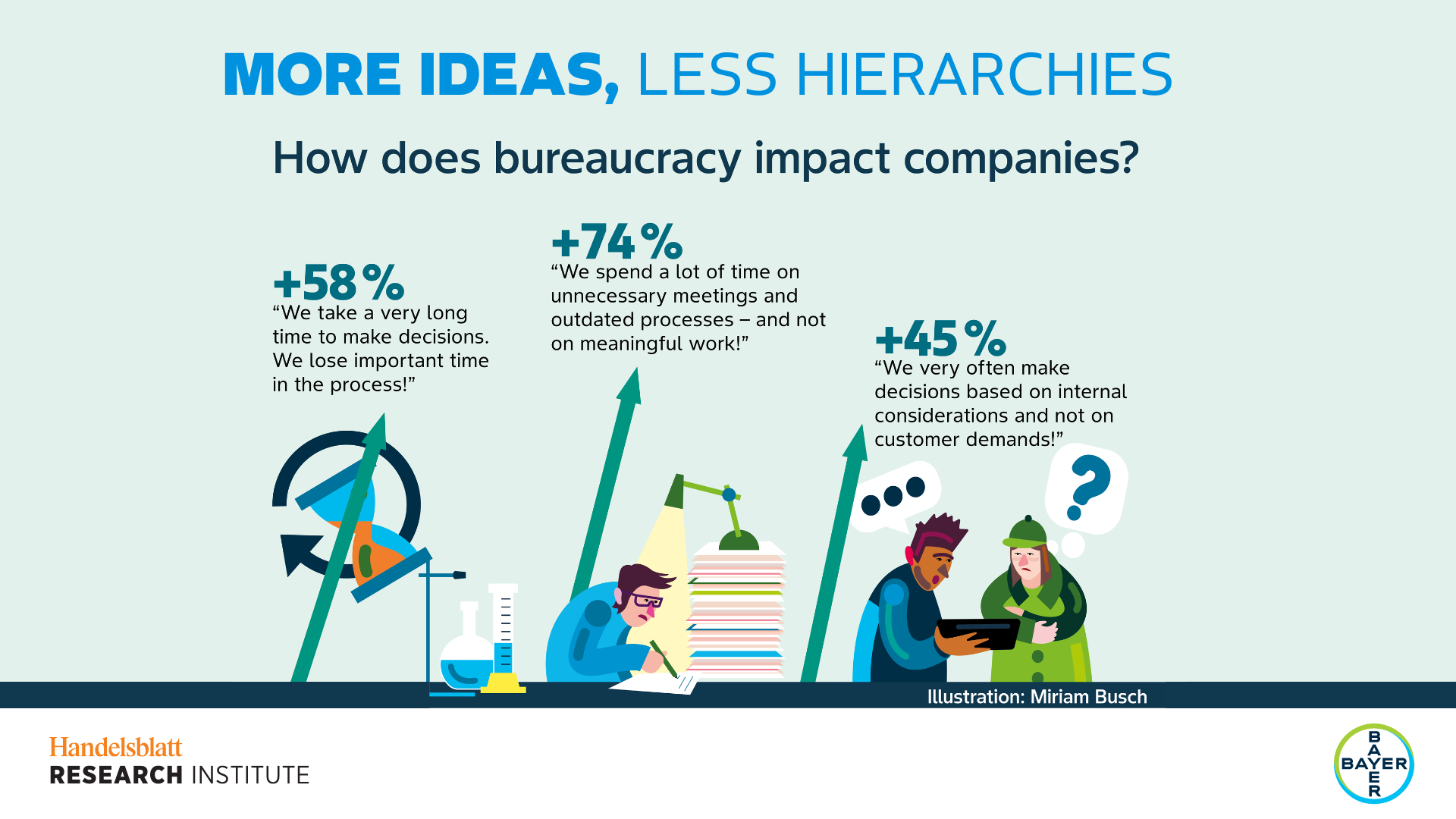
Michael Lurie, Bayer’s chief catalyst, says “Instead of designing the organisation despite what it means to be human, you design the organisation around what it means to be human.”
It’s about creating value across three dimensions:
- For customers: World-leading innovation in products and services
- For employees: Growth, meaning, and entrepreneurship
- For investors: Superior financial performance
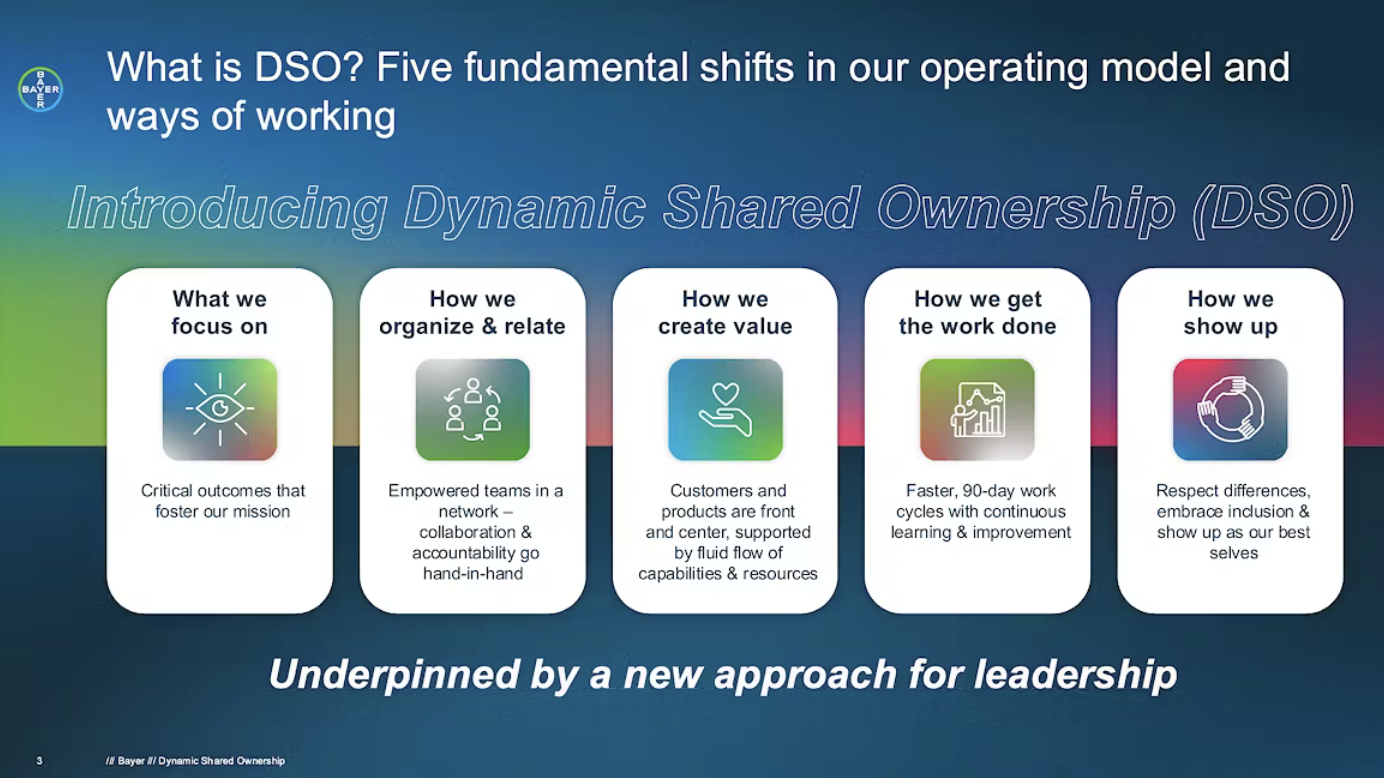
Dynamic Shared Ownership (DSO) consists of five fundamental shifts in how the organisation operates
Shift 1: From shareholder value to mission and outcomes
Measuring outputs rather than inputs is not new, but while most organisations develop grandiose purpose statements, they are far more interested in quarterly results. DSO is about working towards a meaningful mission “Health for all, Hunger for None”. One oncology team was launching a life-saving drug. Instead of going through endless approval layers, they asked a simple question: “What actually helps get this drug to patients faster?”
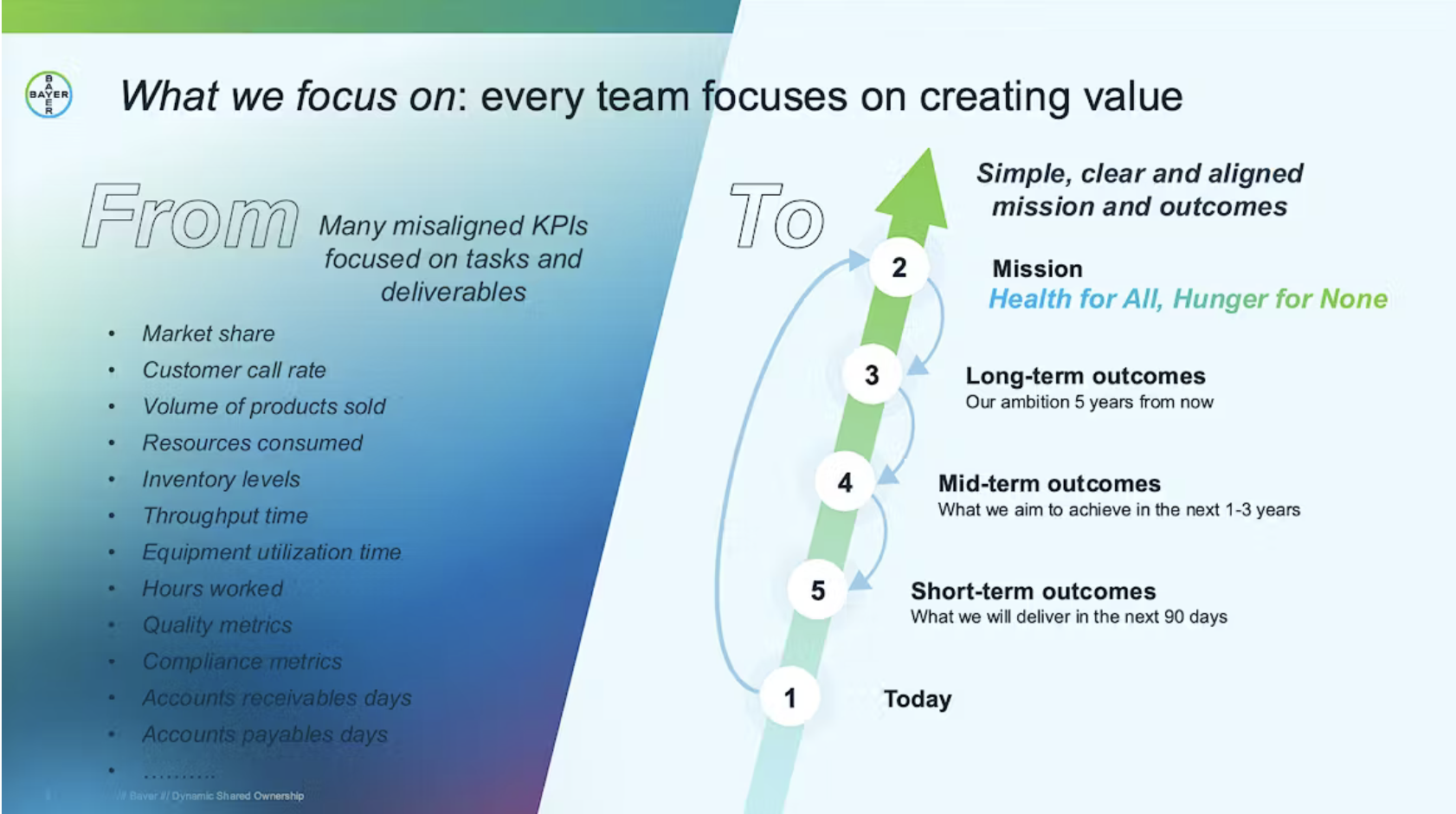
Shift 2: From hierarchy to a network of autonomous teams
Traditionally, teams in large organisations are focused on things like annual budget requests. Bayer says it is redesigning teams around what customers need today and tomorrow. By the end of 2024, for example, the Crop Science division will have 450 customer teams up and running. Early reports indicate a 20-minute increase in time spent with customers per day.
Anderson says “Team Bayer is full of ideas on how to help farmers, patients, and consumers. We want to turn these ideas into solutions, faster. Our Consumer Health division advanced the launch of a new supplement for couples wishing to conceive by more than one year.”
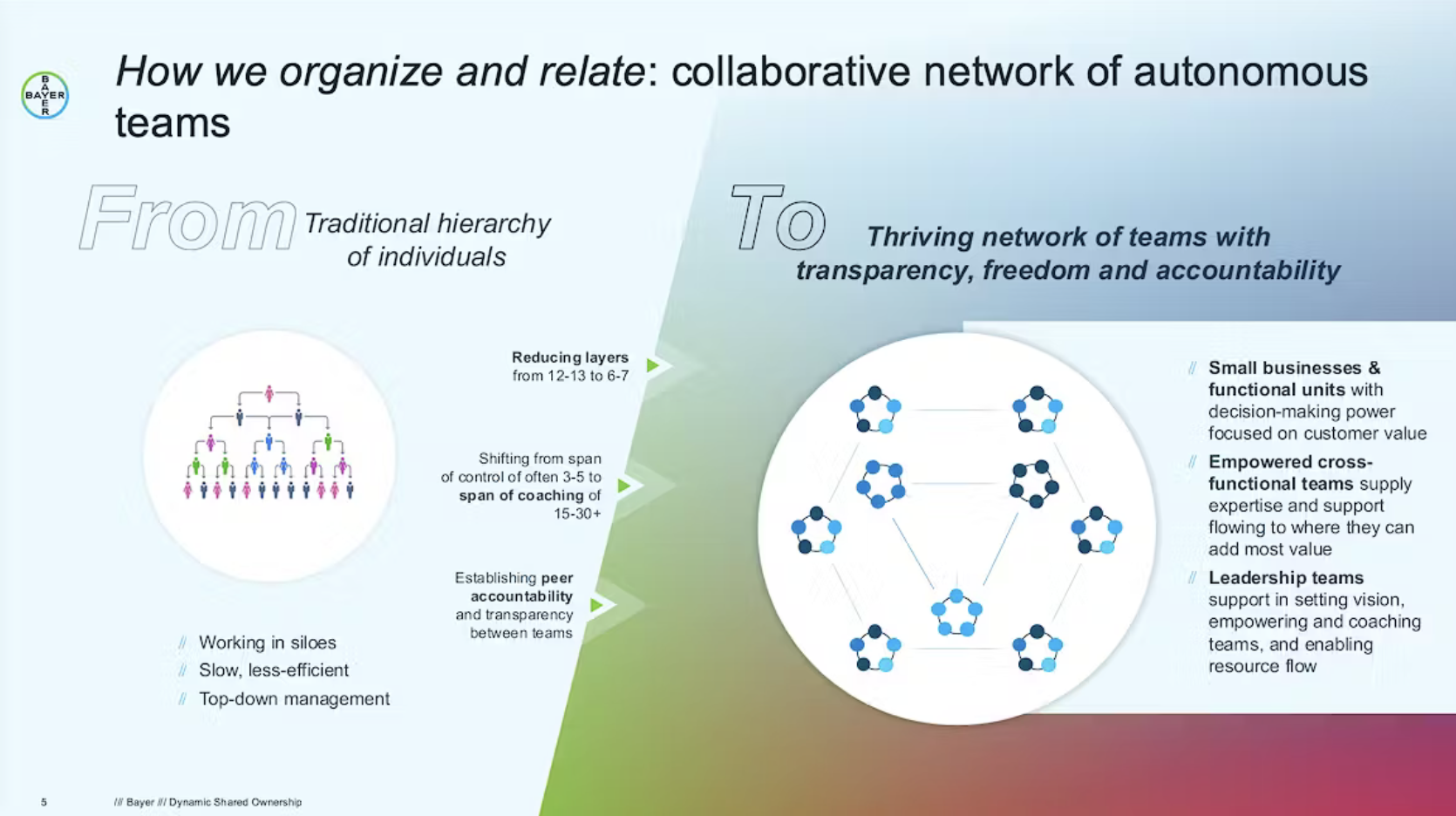
Shift 3: From functions to value creation
DSO creates four types of teams focused on value creation:
- Customer teams: Deep in the trenches with farmers, patients, and consumers
- Product teams: Developing solutions that actually solve problems
- Technical teams: Building killer capabilities in R&D, supply chain, and commercial
- Enabling teams: Providing resources and support where needed
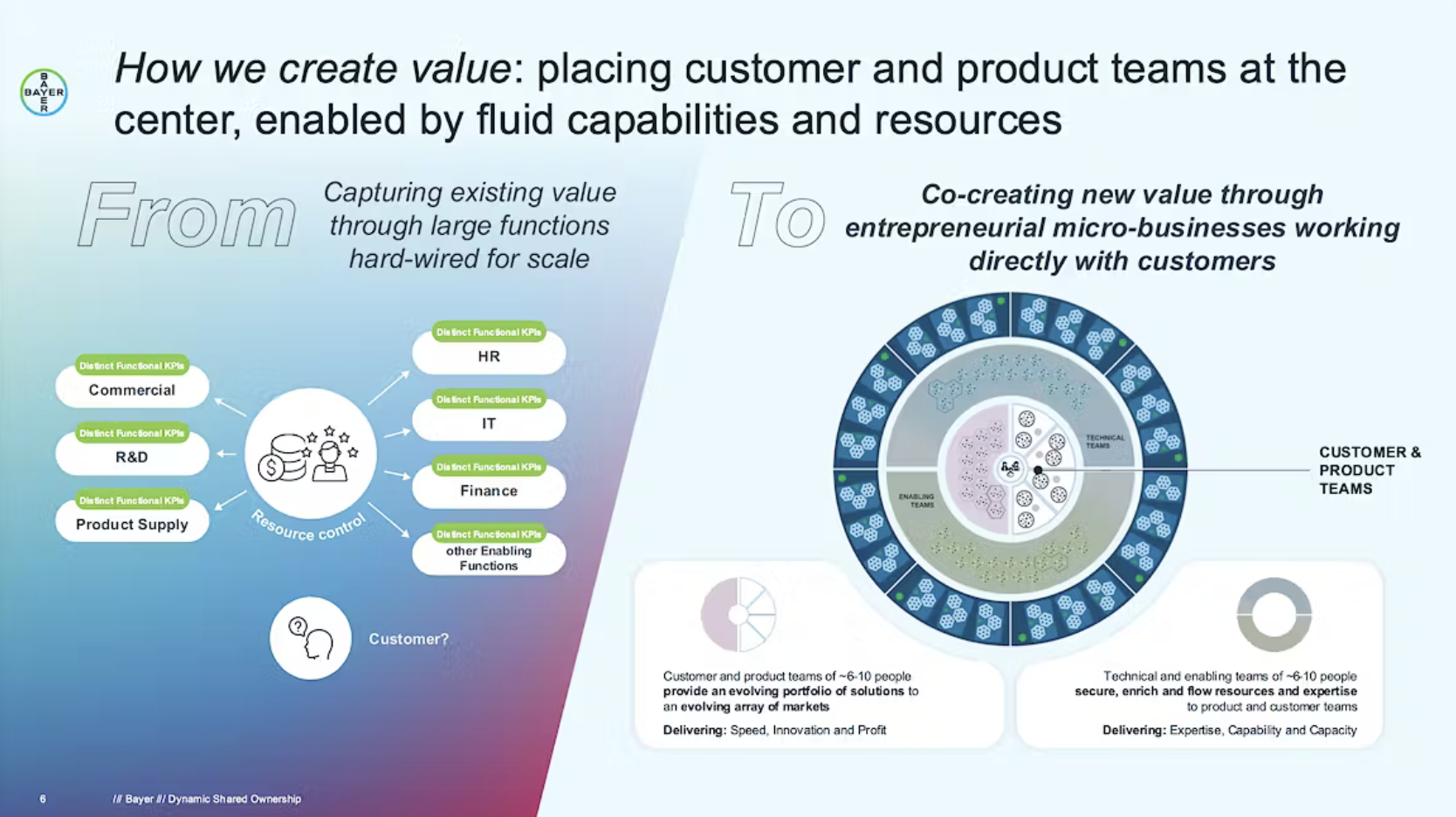
Shift 4: From annual planning to rapid cycles
DSO moves from annual planning to 90-day cycles where teams set clear outcomes, test solutions, learn fast, and adapt. It includes a “brand marketplace” where people allocate themselves to priorities every 90 days based on where they can add the most value.
The pharmaceuticals division advanced its pipeline with eight Investigational New Drug (IND) applications in 2023. They see the potential to accelerate our biggest projects by working in three-month rhythms, assessing progress and reallocating resources along the way.
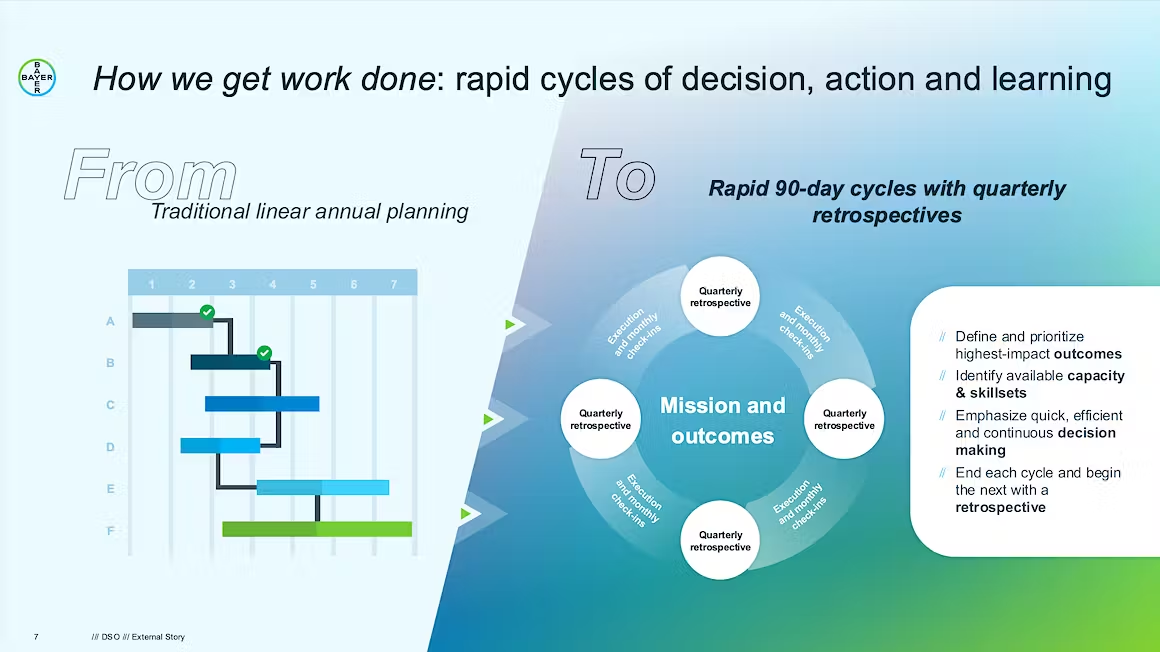
Shift 5: From reactive to creative mindset
Changing structures and processes is one thing, ensuring people to truly thrive requires a totally different mindset. Bayer is challenging five deeply ingrained mindsets:
- From preservation to possibility
- From authority to partnership
- From scarcity to abundance
- From certainty to discovery
- From conformity to self-authorship

This all requires one additional shift, specifically for leaders …
Shift 6: From traditional management to thriving leadership
Bayer is transforming leaders from commanders into enablers, with four distinct roles:
- Visionaries: Engage with teams to shape meaningful missions. No more handing down objectives from on high—leaders work with teams to craft purposes that matter.
- Architects: Help teams reimagine how they create value. Instead of dictating processes, leaders help teams design better ways to serve customers.
- Catalysts: Foster empowerment and teamwork across the network. Rather than managing through hierarchy, leaders break down silos and enable collaboration.
- Coaches: Support teams in working through rapid cycles. Instead of annual reviews, leaders help teams learn fast and evolve continuously.
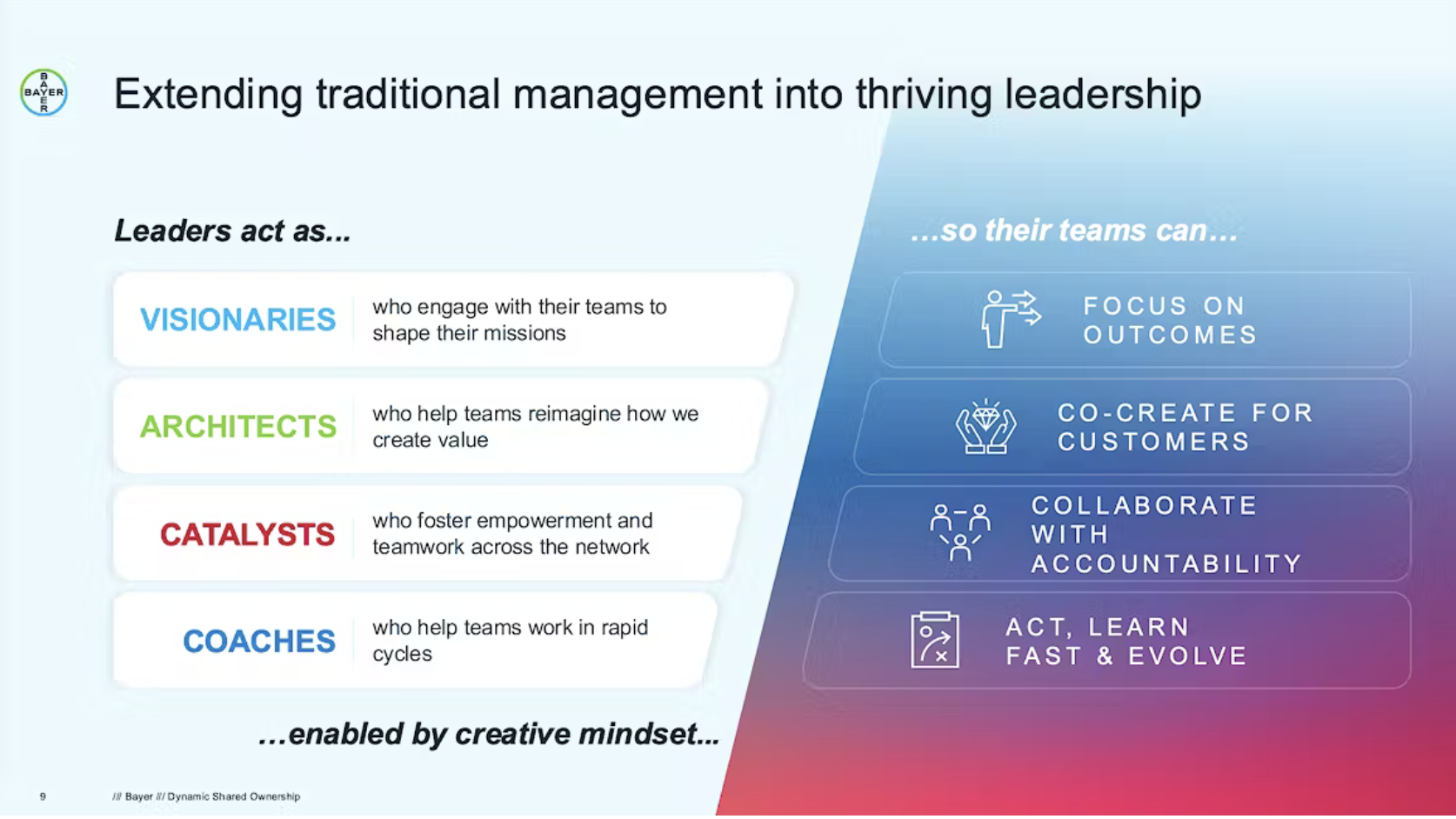
Of course change is never easy. Just like Haier’s reinvention years ago, Bayer is also hugely reducing its layers of management, and significant number of management jobs too. Many of the new teams are not yet in place, or operating in new ways. And while there have been quick wins in many aspects of innovation, it is taking some time for the financial results to follow, as the market value fell during 2024. But Anderson reminds us that this is a three year journey, with pain before the gains.
Anderson says “Our teams are adapting quickly to the new working model. By the end of 2024, our new system will touch every corner of TeamBayer. Through this change, we’re aiming for a more productive and fulfilled workforce; world-leading, faster-to-market innovations; and superior financial performance. ”
More from the blog